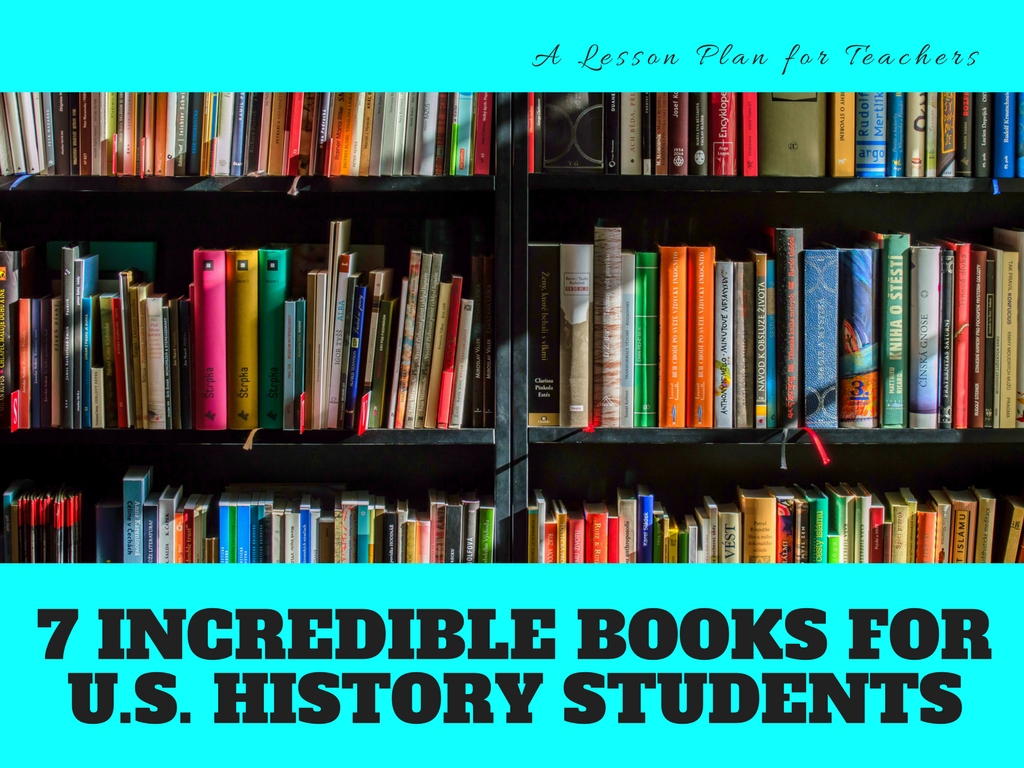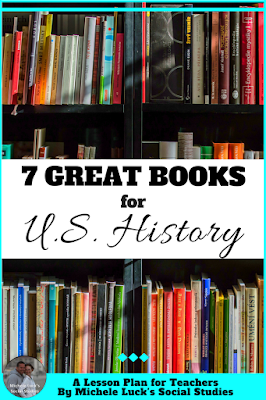Teaching U.S. History doesn’t have to be boring; in fact, social studies lessons centered around gripping, modern reading strategies and interesting core content can be fun and exciting for your U.S. History students when you utilize these 7 incredible books to read with U.S. History Students. Including exciting historical texts in your lesson plans can and will encourage your students to delve deeper into the text, fostering a healthy interest in the U.S. History topic of your lesson plan and the historic era itself.

There are many books appropriate for your U.S. History students, but these 7 incredible books provide the core content needed to teach a historically engaging lesson plan. Teaching social studies with these texts will encourage a life-long interest in history for your U.S. History students. Thread the following texts into your next lesson planning session, sit back, and watch your students engage!
7 Incredible Books for U.S. History Students
1. Triangle: The Fire That Changed America – Triangle is one of my all-time favorite U.S. History texts. I use it when teaching about the Progressive Era. Detailing the Triangle Shirtwaist factory fire of 1911, Triangle illustrates a brutal time in which worker’s rights, workplace safety, and child labor laws weren’t commonplace. Author David von Drehle paints a vivid picture of New York City circa the early 1900s, telling the unabashed story of the era while highlighting the events of that fateful day.
Bonus! Incorporate NPR’s The Triangle Shirtwaist Factory Fire podcast archives to further engage your readers and bring the story to life.
Super bonus! Use the Gilded Age Complete Unit for U.S. History to build a strong foundation for the Progressive Era.
2. The Train to Crystal City – Another great U.S. History read for students is The Train to Crystal City: FDR’s Secret Prisoner Exchange Program and America’s Only Family Internment Camp During World War II. Author Jan Jarboe Russell explores social studies concepts while following two interned teenagers as they face the struggles of daily life in an internment camp alongside the regular complications of adolescence. Allowing your U.S. History Students to bond with these two girls will present a less clinical perspective to World War II and internment camps.
3. The Long Way Home – David Laskin’s The Long Way Home: An American Journey from Ellis Island to the Great War follows 12 U.S. immigrant soldiers, fighting alongside their fellow draftees during World War I. The Long Way Home tells a riveting, yet true, tale of the Gilded Age that will both educate your U.S. History students and also vividly paint an emotional picture of WWI and immigration.
Bonus! Bring WWI to life with this engaging Trench Warfare activity.
4. The Children’s Blizzard – From the same author as The Long Way Home, The Children’s Blizzard tells a similarly engaging tale of the 1800s American frontier. Opening the tale with hundreds of young pioneers who perished on the prairie following an unexpected cold snap and blizzard, David Laskin explores the Homestead Act, Westward Expansion, and American Settlement in 19th century America.
Bonus! Have students research the MinnPost’s Minnesota History article recounting the blizzard that took so many teenage lives in 1888. Compare and contrast the brief article with Laskin’s detailed account.
5. The Worst Hard Time – Timothy Egan, New York Times writer and author of The Worst Hard Time: The Untold Story of Those Who Survived the Great American Dust Bowl, follows many families who suffered and persevered through the Great Depression, facing daily struggles of living and raising a family in the Dust Bowl, circa early 1930s.
6. Warriors Don’t Cry – Autobiography Warriors Don’t Cry: A Searing Memoir of the Battle to Integrate Little Rock’s Central High by Melba Pattillo Beals transports readers to 1957 when Melba faced the challenges and perils of high school. Except, Melba didn’t have a normal high school existence. She faced incredible persecution from her classmates, was attacked and injured multiple times, and took a stand for Civil Rights. This book is a great introduction into the Civil Rights Movement, integration, and the Brown v. Board ruling that shook American schools in the 1950s.
Bonus! Allow students to re-enact Brown v. Board with the U.S. Courts re-enactment script. Or, encourage students to engage in debate regarding the ruling.
7. Dixie’s Daughters – Encourage controversial reading on Confederate values and traditions and spur healthy debate about life in the South post Civil War. Karen Cox’s Dixie’s Daughters: The United Daughters of the Confederacy and the Preservation of Confederate Culture (New Perspectives on the History of the South) details the efforts by the members of the United Daughters of the Confederacy as they worked to commemorate and preserve the Confederate lifestyle, memorializing the Confederacy beyond its time.
Quick Tips to Choose the Right Reads
- Consider your audience! Your class may be more technically inclined, and your students may appreciate a clean, historically accurate viewpoint. Or, your students may benefit from a vividly illustrated piece with emotion and memoir.
- Mix it up! U.S. History students can benefit from textbook material that is age appropriate and educationally advanced. They may also engage in a children’s book, analyzing the images and simple text.

Compiling the many resources at your digital fingertips can move your
U.S. History lesson plans from boring or dull to relative, interesting,
and inspiring. Teaching U.S. History should be fun for you and your students! From a complete Primary Source Analysis bundled set to elevate student engagement, to interactive, era-specific walking tours, use these resources to allow your U.S. history students the opportunity to move beyond basic social studies lessons!
Happy Teaching!
